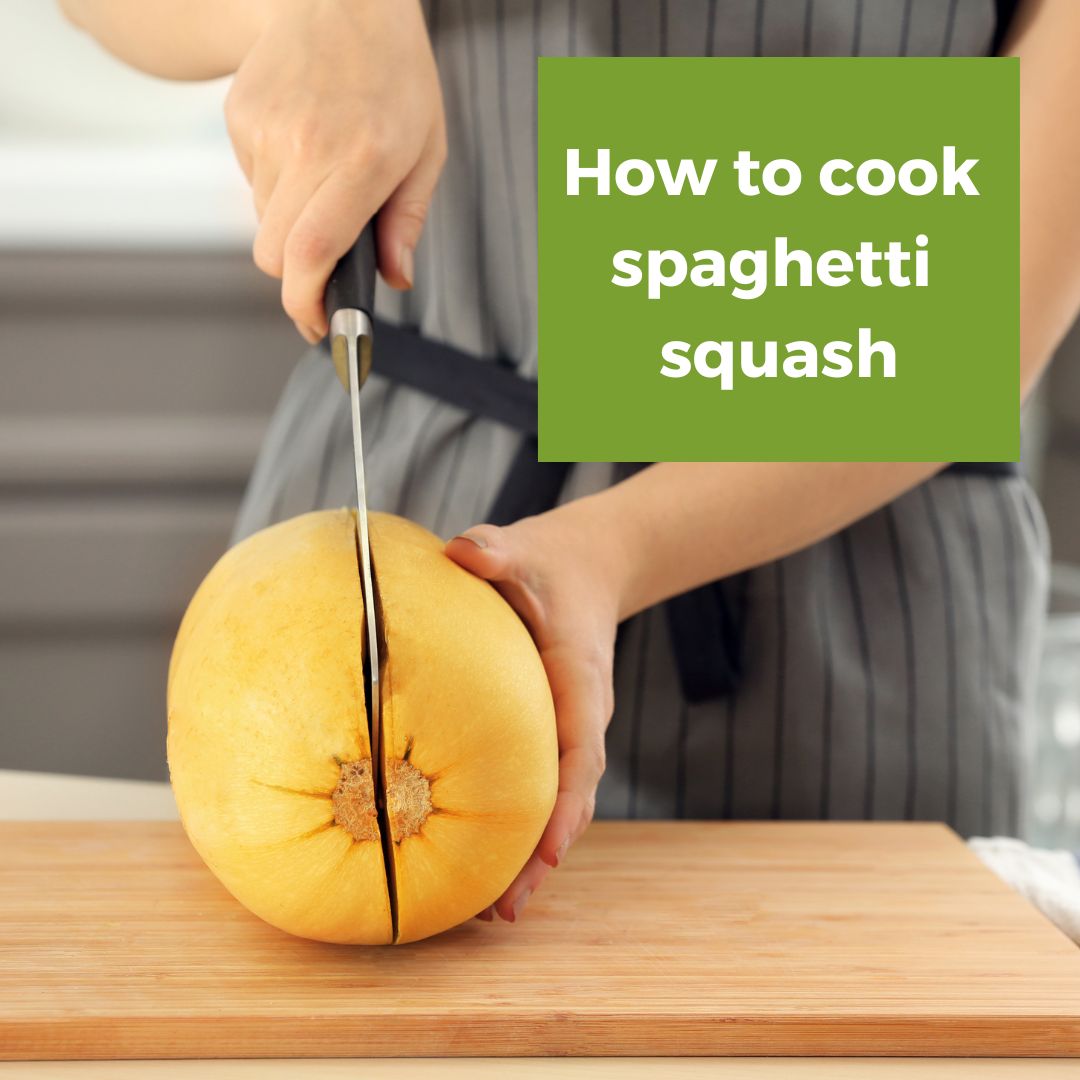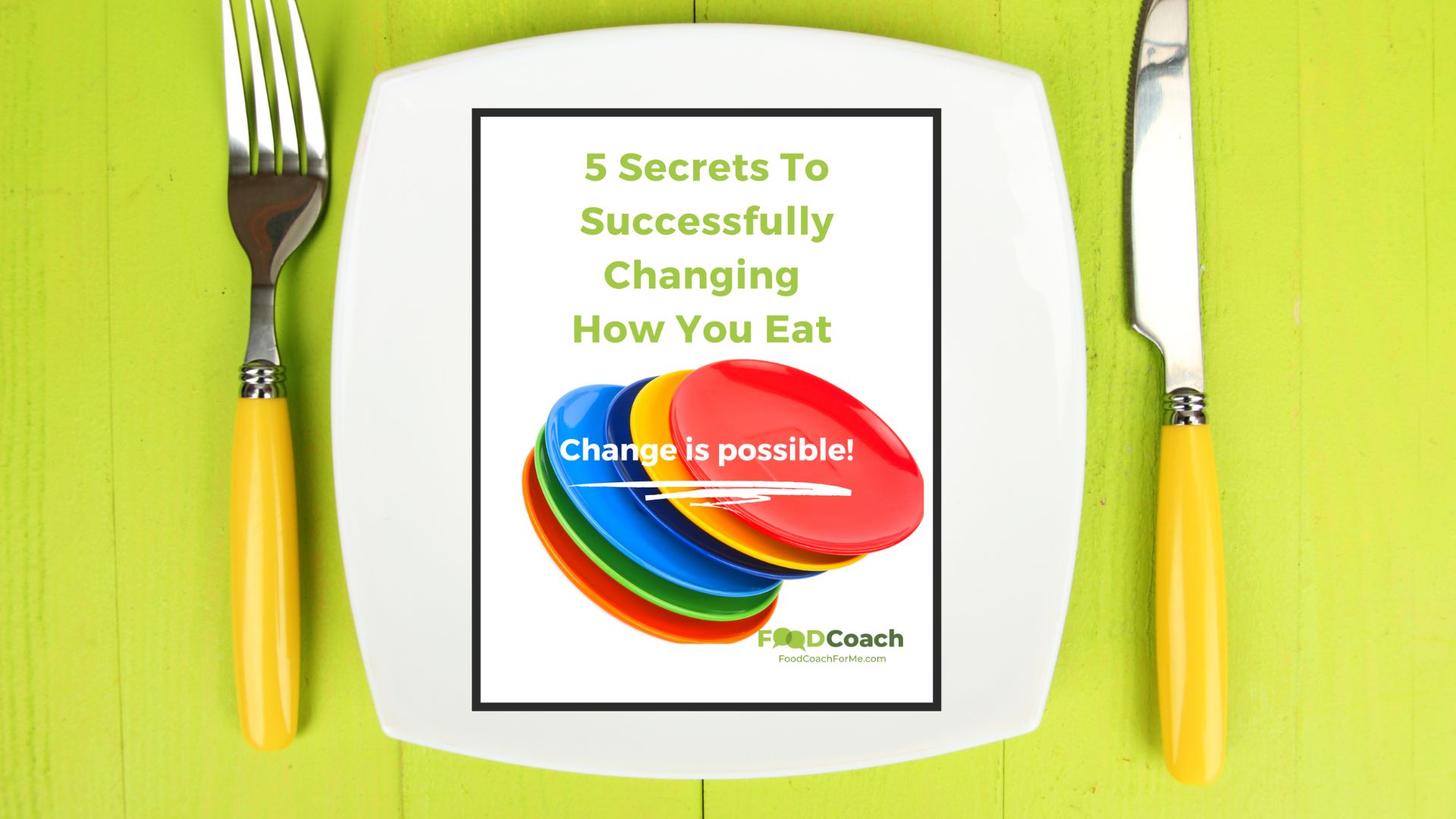How to cook spaghetti squash
October 20, 2019

There are many ways to cook spaghetti squash.
Here are two great ways to cook spaghetti squash and one method I recommend you avoid. I’ll also answer other questions I often receive about it from people who want to eat healthier. The other top questions I get are:
- “What does spaghetti squash taste like?”
- “How should I cut spaghetti squash? Does it need to be peeled?”
- “Can spaghetti squash be frozen?”
- “Why is spaghetti squash a healthy choice?”
I’ll cover all of these in this post, so keep reading!
What does spaghetti squash taste like?
Like the pasta it’s named after, spaghetti squash has a very mild flavor that goes well with anything you put on it. When it’s absolutely plain, it tastes similar to yellow summer squash.
The texture is different and hard to describe. It’s not like pasta, but it’s not “mushy” like some squashes can get. Someone seeing me for nutrition counseling once said it reminded them of the texture of rice-a-Roni.
How to cut spaghetti squash? Does it need to be peeled?

How you cut your squash depends on the method you will use for cooking your spaghetti squash and the pan you will use. If you are going to roast it or bake it, cut it half lengthwise from the stem to the blossom end.
To cook your squash in the microwave, you may need to cut it in half across the middle of the squash, depending on your pan size and microwave size.
If you are going to steam your squash in the oven, you can cut it in half either lengthwise or around the middle.
Can spaghetti squash be frozen?
Yes, you can freeze it! It’s one of the five reasons I grow and recommend this winter squash. Here’s how to freeze spaghetti squash so it’s easy to use for future meals:
After you’ve cooked your squash, let it cool. Then put it into a half cup or cup portions in muffin tins and freeze. Once it is frozen solid, remove the “squash pucks” and store them in a freezer bag for future use. (Read “7 Ways to Use Spaghetti Squash” for some ideas!)
Why is spaghetti squash a healthy choice?
Spaghetti squash is considered a non-starchy vegetable. This means it has fewer calories and carbohydrates than many foods that it can easily replace on your plate. (Learn more by reading “Spaghetti squash: A great low carb choice full of nutrition” by clicking here.)
Cooking option #1: How to microwave spaghetti squash

Cook the squash on high for 12 to 18 minutes or until the tough outer skin can be pierced with a fork. Then let it sit in the water for about 10 minutes to finish steaming in the microwave or on your counter. (You let it stand for longer, but don’t forget it!) Being careful not to burn yourself, transfer the squash to a big bowl. Use a fork and scrape the flesh until it comes off in shreds.
If this doesn’t happen, cook the squash for a few more minutes. Throw out the tough outer shell, and your squash is ready to use in many different ways.
Cooking option #2: Steaming spaghetti squash in the oven
If you have your oven going or want to cook an entire spaghetti squash at one time, you can easily steam spaghetti squash in the oven. Simply follow the method described above. How long it takes will vary depending on your oven temperature.
In a 375 degree oven, cooking spaghetti squash takes about 40 to 45 minutes. In a 425 degree oven, it takes about 30 minutes.
The good news is that this is a very forgiving cooking method, so if the phone rings or your child (or spouse!) suddenly needs your attention, it won’t be ruined if it cooks for a bit longer.
The way to cook spaghetti squash that I recommend you avoid
While it’s easy to find many recipes for roasting or stuffing spaghetti squash, I recommend avoiding those methods. Why?
Two reasons: First, those methods add extra calories by adding a fair amount of oil or fats to the squash. I’d instead add those with my choice of sauces or with the items I add to the spaghetti squash once it is cooked!
But the main reason I recommend avoiding them is this: Those methods limit what you can do with the squash after you’ve cooked it!
As a busy person, which you probably are, wouldn’t you rather cook the squash once and then be able to use it several different ways for future meals? Read “7 Spaghetti squash ideas to use” for meal ideas that are quick, easy, and very versatile ways to use spaghetti squash once you’ve cooked it.
Eating spaghetti squash is one way to eat healthier

If you want personalized help related to your eating habits or health, start by booking a free discovery call. We can discuss what you want to accomplish and see if working with me would be helpful to you.


Having personally struggled with weight and gut health issues, I understand how easy it is to think that food is the enemy especially with the changes our bodies undergo as we age. It doesn’t have to be that way!
I love using my extensive education and coach approach to help people realize it is possible to feel better and be healthier while still enjoying their life and food.


